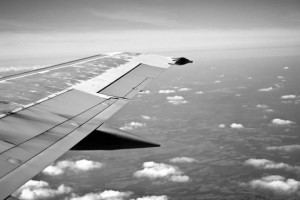Physio Health Advice > Tips for Travelling
Travel has almost become a necessity of modern life. Many people travel for work, and most of us travel for pleasure at least once per year. Unfortunately, the hours of sitting involved in travel often also result in a stiff lower back, neck pain, and headaches. Below is a list of tips and tricks to avoid travel-related aches and pains.
Lower Back
Lower back pain is the chief complaint of most car and plane travelers. To avoid low back pain, try the following tips:
1. Adjust the seat angle. If you are able, tilt the seat slightly down towards your feet, not towards your hips. Ideally, your knees should be level with your hips, or even slightly lower. A footrest to lift your knees can also help.
2. Adjust the seat back. To avoid compression through your lower back and pelvis, your seat should be upright, not tilted backwards. This will be more comfortable with implementation of tip #1, and aligns your whole spine.
3. Lift the height of the whole seat. This will assist with tip #1 by lifting the whole body away from the floor. When your hips are less bent, it is easier for your back to sit comfortably in an upright position.
4. Use a lower back support. Many cars nowadays come equipped with in-built lumbar supports. Often this support is a generic design and not fitted for your specific shape or height. A proper lumbar pillow, or even a rolled towel in the small of the back, can be more effective in maintaining the natural arch of your spine. This relieves pressure through your inter-vertebral discs, spinal ligaments, and spinal muscles.
Neck
Neck discomfort is easier to improve when tips for lower back are implemented first. Some very easy tips to reduce neck pain are as follows:
1. Use a travel pillow. If travelling on an airplane, try wearing the pillow backwards or sideways. This assists in supporting the head in a slightly better position when you rest or sleep, which helps to reduce the stress placed on the muscles, ligaments and joints within the neck.
2. Every hour, perform 10 chin retractions (also called chin tucks). This is easiest to perform correctly if you sit tall and press your chin straight backwards, lengthening the back of your neck. Do not tuck the chin to the chest. This exercise stretches the small postural muscles at the base of the skull, relaxing them.
3. Keeping your eyes on the road, rotate your head side to side gently. Then tilt side to side gently. Performing any neck movements helps reduce the tension within the muscles from holding still for long periods of time.
It is also advisable to stop for 15 minutes to stretch your legs and walk around every two hours when driving. When on a plane, refer to the guidelines written by the airline for prevention of deep vein thrombosis.
And remember, the tips above are only suggestions. If you find they are helpful, continue performing them throughout your travels. However, if any of the above tips cause you pain or discomfort book an appointment, and have a chat with our friendly physiotherapists!


